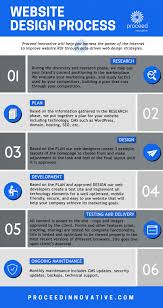Unlocking the Power of Web Design for SEO Success
The Impact of Web Design on SEO: A Crucial Relationship
When it comes to establishing a strong online presence, the synergy between web design and SEO plays a pivotal role. While many businesses focus solely on optimising their content for search engines, the design of a website is equally important in determining its visibility and ranking. Let’s delve into how web design influences SEO and why it’s crucial for your digital success.
User Experience (UX) Matters
One of the key elements of web design that impacts SEO is user experience (UX). Search engines like Google prioritise websites that offer a seamless and intuitive user experience. A well-designed website with easy navigation, fast loading times, and mobile responsiveness not only pleases visitors but also signals to search engines that your site is valuable and relevant.
Mobile-Friendly Design Boosts Rankings
In today’s mobile-centric world, having a mobile-friendly website is no longer optional – it’s essential for SEO success. Google’s mobile-first indexing means that websites optimised for mobile devices are likely to rank higher in search results. By adopting responsive web design principles, you can ensure that your site looks and functions flawlessly across all devices, enhancing both user experience and SEO performance.
Optimising for Speed and Performance
Website speed is another critical factor that influences both user experience and SEO rankings. Slow-loading websites not only frustrate visitors but also deter search engines from crawling and indexing your pages efficiently. By prioritising performance optimisation in your web design, such as minimising HTTP requests, leveraging browser caching, and compressing images, you can create a faster website that ranks higher in search results.
SEO-Friendly Content Presentation
The way you structure and present your content on a website can significantly impact its SEO effectiveness. Well-organised content with clear headings, meta tags, alt text for images, and internal linking not only improves readability for users but also helps search engines understand the relevance of your content. Incorporating SEO best practices into your web design ensures that your content is easily discoverable by both users and search engine crawlers.
Aesthetics with Purpose
While aesthetics are important in web design, they should always serve a purpose beyond visual appeal. Search engines value websites that provide valuable content in an aesthetically pleasing manner. Balancing visual elements with SEO considerations such as keyword placement, structured data markup, and semantic HTML coding can help you create a website that engages users while boosting its visibility in search results.
In Conclusion
The relationship between web design and SEO is symbiotic – each element complements the other to create a cohesive digital presence. By prioritising user experience, mobile-friendliness, speed optimisation, content presentation, and purposeful aesthetics in your web design efforts, you can enhance your website’s performance in search engine rankings and ultimately drive more organic traffic to your site.
Top 8 Advantages of Web Design SEO: Boosting User Experience, Search Rankings, and Brand Credibility
- Enhances user experience for website visitors
- Improves mobile responsiveness and accessibility
- Boosts search engine rankings and visibility
- Increases website loading speed and performance
- Optimises content presentation for SEO benefits
- Drives organic traffic to the website
- Enhances brand credibility and trustworthiness
- Maximises ROI through improved online presence
Challenges in Web Design SEO: Navigating Complexity, Time, Updates, Balance, and Costs
Enhances user experience for website visitors
An essential benefit of incorporating SEO into web design is its ability to enhance the user experience for website visitors. By implementing user-friendly navigation, responsive design for various devices, and fast-loading pages, SEO-driven web design ensures that visitors can easily access and navigate through a website. A seamless user experience not only keeps visitors engaged but also encourages them to explore more content, ultimately leading to higher retention rates and increased conversion opportunities.
Improves mobile responsiveness and accessibility
Enhancing mobile responsiveness and accessibility through web design SEO is a crucial advantage that ensures your website caters to the ever-growing population of mobile users. By optimising your site for various screen sizes and devices, you not only provide a seamless browsing experience but also signal to search engines like Google that your website is user-friendly and relevant. This proactive approach not only improves user engagement and satisfaction but also boosts your SEO rankings, as search engines increasingly prioritise mobile-friendly websites in their results pages.
Boosts search engine rankings and visibility
An essential benefit of incorporating SEO principles into web design is the significant boost it provides to search engine rankings and visibility. By structuring your website with SEO in mind, including relevant keywords, meta tags, and optimised content, you increase the likelihood of your site appearing higher in search results. This enhanced visibility not only drives more organic traffic to your website but also improves your online presence, making it easier for potential customers to find and engage with your business.
Increases website loading speed and performance
Optimising web design for SEO can significantly enhance website loading speed and performance, a crucial factor in today’s digital landscape. By implementing best practices such as minimising HTTP requests, leveraging browser caching, and compressing images, web designers can create faster-loading websites that not only improve user experience but also boost search engine rankings. A swift and responsive website not only keeps visitors engaged but also signals to search engines that your site is reliable and valuable, ultimately leading to improved visibility and higher organic traffic.
Optimises content presentation for SEO benefits
Optimising content presentation through web design for SEO benefits is a crucial advantage that can significantly impact a website’s visibility and ranking in search engine results. By structuring content effectively, incorporating relevant keywords, utilising clear headings and meta tags, and implementing proper image alt text, web designers can enhance the discoverability and relevance of the content to both users and search engines. This strategic approach not only improves user experience but also signals to search engine algorithms the value and authority of the website’s content, ultimately leading to higher organic traffic and better SEO performance.
Drives organic traffic to the website
An essential benefit of incorporating SEO principles into web design is its ability to drive organic traffic to the website. By optimising the site’s structure, content, and technical elements for search engines, businesses can attract relevant visitors who are actively searching for their products or services. This targeted organic traffic not only increases visibility and brand awareness but also boosts the likelihood of converting visitors into customers, ultimately contributing to the overall success of the website.
Enhances brand credibility and trustworthiness
An often overlooked yet crucial benefit of incorporating SEO principles into web design is the enhancement of brand credibility and trustworthiness. A well-designed website that ranks high in search results conveys professionalism, reliability, and authority to visitors. By creating a user-friendly experience, optimising content for search engines, and ensuring seamless navigation, businesses can establish a strong online presence that instils confidence in their target audience. This boost in brand credibility not only fosters trust among users but also sets the foundation for long-term relationships and customer loyalty.
Maximises ROI through improved online presence
By leveraging effective web design for SEO, businesses can maximise their return on investment by enhancing their online presence. A well-designed website that is optimised for search engines not only attracts more organic traffic but also improves visibility in search results, ultimately leading to increased brand exposure and customer engagement. By investing in web design that prioritises SEO strategies, businesses can effectively reach their target audience, drive conversions, and achieve a higher ROI through a stronger and more competitive online presence.
1. Complexity
One significant drawback of integrating SEO strategies into web design is the inherent complexity of the process. Implementing SEO elements such as structured data markup, schema.org integration, and technical optimisation requires a deep understanding of search engine algorithms and coding practices. Navigating the intricacies of SEO-friendly web design demands technical expertise and ongoing education to stay abreast of evolving best practices. The complexity involved in harmonising design aesthetics with SEO requirements can pose challenges for businesses seeking to maximise their online visibility and rankings.
2. Time-Consuming
Optimising web design for SEO can be a time-consuming process due to the extensive analysis, meticulous planning, and precise implementation required. From conducting keyword research and competitor analysis to restructuring website architecture and optimising on-page elements, every step demands careful attention and deliberation. Balancing the creative aspects of web design with the technical requirements of SEO can prolong the development timeline, making it a challenging aspect for businesses seeking quick results in their online visibility efforts.
3. Constant Updates
One significant drawback of integrating SEO into web design is the necessity for constant updates. The ever-evolving nature of SEO algorithms and best practices means that websites must undergo regular updates to ensure optimal performance. This continuous need for adaptation can be time-consuming and resource-intensive, requiring ongoing monitoring and adjustments to keep up with the latest trends and algorithm changes. Failure to stay updated with SEO developments could result in a decline in search engine rankings and diminished online visibility, highlighting the challenge of maintaining a competitive edge in the dynamic landscape of digital marketing.
4. Balancing Act
Achieving a visually appealing web design while simultaneously ensuring SEO optimisation can present a significant challenge for website developers and designers. The delicate balance between aesthetics and SEO requirements often requires careful consideration and strategic decision-making. While visually engaging elements can enhance user experience and brand perception, they must be integrated thoughtfully to avoid compromising SEO efforts. Striking the right balance between design aesthetics and SEO best practices is essential to create a website that not only captivates visitors but also ranks well in search engine results.
5. Cost Factor
One significant drawback of integrating SEO considerations into web design is the cost factor. Investing in high-quality web design that prioritises SEO principles may lead to higher expenses compared to traditional website development. Implementing SEO-friendly features, conducting thorough keyword research, and ensuring technical optimisation can require additional resources and expertise, potentially increasing the overall cost of website creation. However, while the upfront investment may be higher, the long-term benefits of improved search engine visibility and increased organic traffic can outweigh the initial costs for businesses looking to maximise their online presence.



